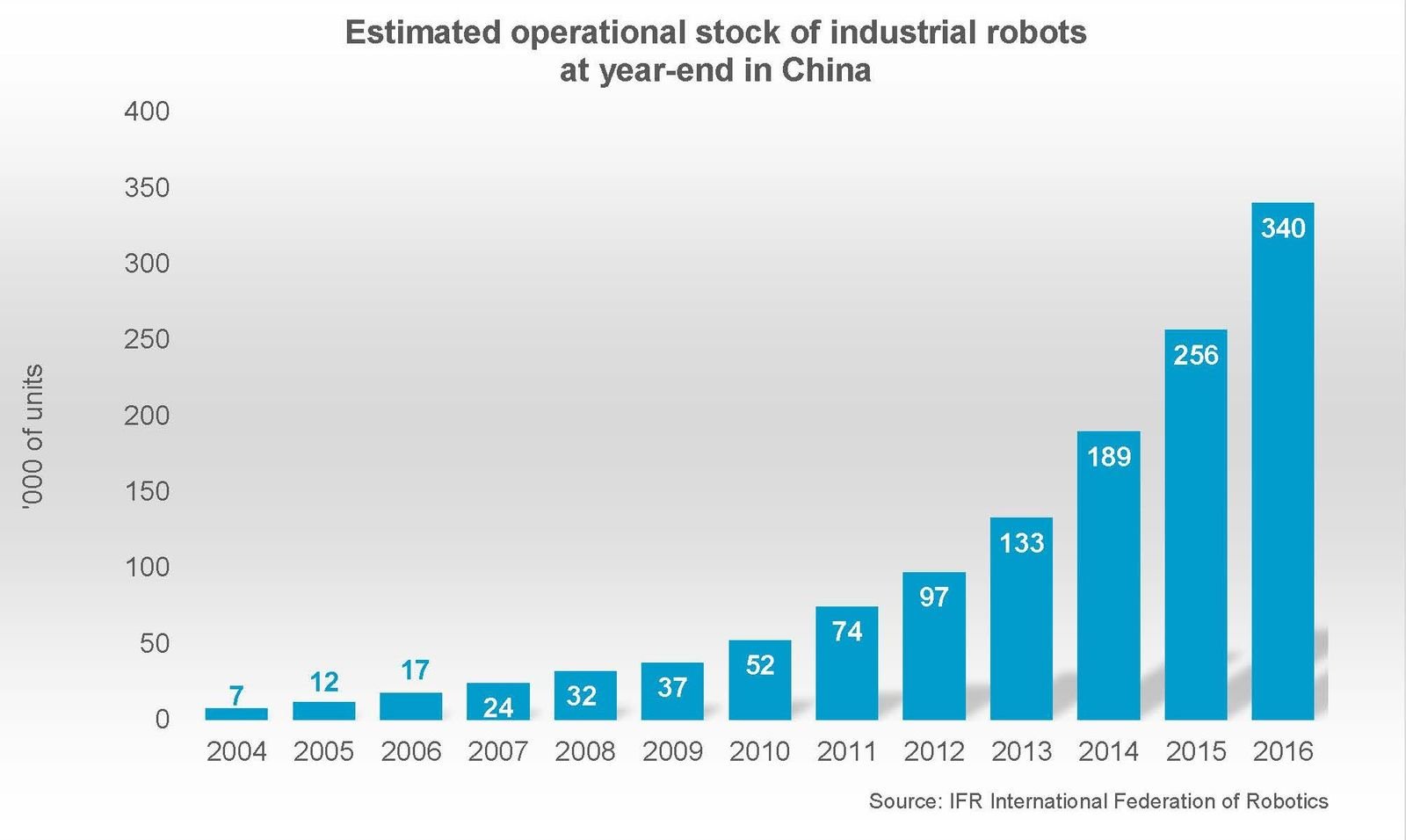
From 2020 to 2022 almost 2 million new units of industrial robots are expected to be installed in factories around the world. New technology trends and market developments enable companies to react to changing requirements. The International Federation of Robotics shows top trends to innovate.

“Smart robotics and automation are vital to deal with new consumer trends, demand for product variety or challenges from trade barriers”, says Dr. Susanne Bieller, General Secretary of the IFR. “New technological solutions pave the way for more flexibility in production.”
Simplification, Collaboration and Digitalization are key drivers that will benefit robot implementation.
Robots get smarter
Programming and installation of robots become much easier. How this looks in practice: Digital sensors combined with smart software allow direct teaching methods, so-called “Programming by Demonstration”. The task that the robot arm is to perform is first executed by a human: He literally takes the robot arm and hand-guides it through the movements. This data is then transformed by the software into the digital program of the robot arm. In future, machine learning tools will further enable robots to learn by trial-and-error or by video demonstration and self-optimize their movements.
Robots collaborate with workers
Human-robot collaboration is another important trend in robotics. With the ability to work in tandem with humans, modern robotic systems are able to adapt to a rapidly changing environment. The range of collaborative applications offered by robot manufacturers continues to expand. Currently, shared workspace applications are most common. Robot and worker operate alongside each other, completing tasks sequentially. Applications in which the human and the robot work at the same time on the same part are even more challenging. Research and Development (R&D) focuses on methods to enable robots to respond in real-time. Just like two human workers would collaborate, the R&D teams want them to adjust its motion to its environment, allowing for a true responsive collaboration. These solutions include voice, gesture and recognition of intent from human motion. With the technology of today, human-robot collaboration has already a huge potential for companies of all sizes and sectors. Collaborative operations will complement investments in traditional industrial robots.

Robots Go Digital
Industrial robots are the central components of digital and networked production as used in industry 4.0. This makes it all the more important for them to be able to communicate with each other - regardless of the manufacturer. The so called “OPC Robotics Companion Specification”, which has been developed by a joint working group of the VDMA and the Open Platform Communications Foundation (OPC), defines a standardized generic interface for industrial robots and enables industrial robots to connect into the Industrial Internet of Things (IIoT). The digital connectivity of robots with e.g. cloud technology is also an enabler for new business models: Robot leasing for example - called Robots-as-a-Service - has advantages that might be especially attractive for small and medium-sized enterprises (SMEs): no committed capital, fixed costs, automatic upgrades and no need for high-qualified robot operators.
For more trends on the global robotics market please see our website.
Press contact
econNEWSnetwork
Carsten Heer
Tel. +49 (0) 40 822 44 284
Email: [email protected]



